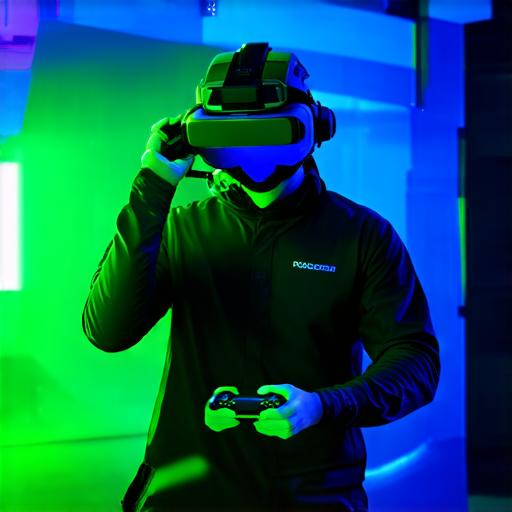In the ever-evolving landscape of digital entertainment, virtual reality (VR) games are redefining the boundaries of interactive experiences.
The Awe-Inspiring Allure of Immersion
“Virtual Reality is the next major leap for interactive computing,” asserts John Carmack, co-founder of id Software. Immerse players in a 3D world where they can interact with objects and environments in ways never before possible, fostering a sense of presence that transcends traditional gaming.
From Vision to Reality
Start by defining your game’s concept. What unique experience do you want to provide? Brainstorm ideas, create prototypes, and refine them until you have a clear vision of the immersive world you wish to create.
The Tools of the Trade
Unity and Unreal Engine are popular choices for VR development due to their intuitive interfaces, extensive libraries, and active communities that can provide support throughout your journey. However, other tools such as A-Frame, Godot, and CryEngine also offer viable options.
Designing for a New Dimension
Designing for VR requires a fresh perspective. Consider factors such as motion sickness, comfort, and usability when crafting your game’s mechanics and user interface. Use comfortable movement schemes, minimize head movements, and provide intuitive controls that feel natural to the player.
Bringing It to Life

Once you have your design, it’s time to bring it to life. Implement physics, lighting, and sound effects to create a truly immersive experience. Optimize your game for performance, ensuring smooth frame rates and minimal lag to maintain the illusion of presence.
Case Study: The Lab
“The Lab” is a VR game developed by Valve Corporation that showcases the potential of the medium. Its diverse range of mini-games, from puzzle-solving to combat, demonstrates what can be achieved with creativity and technical prowess.
The Future of Gaming
As VR technology continues to advance, so too will the games we create. Embrace this exciting frontier and join the ranks of pioneers shaping the future of gaming. Push the boundaries of what is possible and contribute to the ever-growing library of immersive experiences.
FAQs
Q: What software should I use for VR game development?
A: Unity, Unreal Engine, A-Frame, Godot, and CryEngine are popular choices for VR development, each offering unique features and communities to support your journey.
Q: How do I ensure my VR game is comfortable to play?
A: Minimize head movements, provide intuitive controls, and consider factors such as motion sickness when designing your game to create a comfortable and enjoyable experience for the player.
In Conclusion
Creating a virtual reality game is an exhilarating journey that offers endless possibilities for creativity and innovation. Dive in, explore, and shape the future of gaming by pushing the boundaries of what is possible in this captivating medium.
